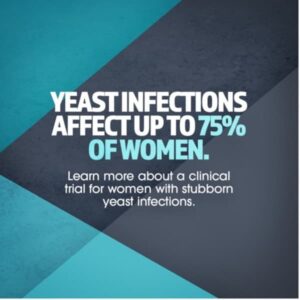If you have a vagina, chances are you’ve encountered the challenges of a yeast infection and all the discomfort it comes accompanied with. Typically, vaginas maintain a healthy balance of bacteria and yeast, but like everything in life, moderation is key. Learn more in our blog about how excess yeast can lead to yeast infections and how to prevent reinfection best.
An Overview of Yeast Infection(s)
Few things are more bothersome than vaginal discomfort, localized in a delicate area of the body and rarely mentioned in open discussion. It’s not always easy knowing what to do when concerns arise. While people with penises can get yeast infections, up to 75% of women will encounter at least one yeast infection in their lifetime, and approximately half will be repeat cases. To say yeast infections are common would be an understatement. However, they are commonly misunderstood, which is why we aim to clarify; what are yeast infections? Vaginal yeast infections manifest when too much of a fungus called Candida grows in the vagina, explaining why the more technical term for a yeast infection is “candidiasis.” As a result of surplus yeast, symptoms such as itching, inflammation, and burning of the vulva can occur, making it quite difficult to experience. A burning sensation while urinating or engaging in sexual intercourse, as well as having thick, white discharge, can also be signs that you may be experiencing a yeast infection.

Why Yeast Infections Return
Yeast infections are the second most common vaginal infections to occur and recurring yeast infections are also very common. Certain factors can place you at a higher risk for infection, such as:
- Antibiotics (they can kill off beneficial bacteria that prevent the overgrowth of yeast in the vagina.)
- Birth control high in estrogen
- Compromised immune system
- Diabetes/other health conditions
- Douches or vaginal sprays
- Pregnancy
The Challenges of Recurrence – How to Prevent It
While some factors may be out of your control, there are still ways to help minimize your odds of recurrence. Specific lifestyle changes have proven successful in the prevention of yeast infections. Specifically, practicing good genital hygiene is an essential component of vaginal health. While keeping things clean is vital, being mindful that the word clean is not synonymous with the usage of scented products is also important. Be sure to avoid anything that can disrupt the vaginal balance; for this reason, using unscented soap and water are the best methods to sanitize this delicate area. A frequent mistake when experiencing vaginal irritation is turning to feminine douches or sprays as the solution. This is a big no-no as these washes are typically too harsh and can make a yeast infection worse. For women on their menstrual cycle, be sure to change tampons and pads regularly; using the correct soap may not help if the area remains damp afterward.
Another way to help steer clear of reinfection is wardrobe. What you wear can have an impact on vaginal infections. Choosing the right underwear can go a long way; you want to prevent your genital area from becoming damp. Thus, light underwear such as cotton is an excellent choice. Avoid staying in a wet swimsuit for extended periods of time, as this creates the perfect setting for yeast to spread. Lastly, try not to wear tight clothing. Form-fitted clothes facilitate moisture accumulation; instead, opt for loose-fitting items such as skirts or baggier pants.
Vaginal yeast infections can be a real pain, but you don’t have to endure them alone.

We want to help you beat the yeast. Studies for recurring yeast infections are currently enrolling now. Women who qualify and participate may see a doctor at no cost and receive compensation for time and travel.
For more details on relevant women’s health issues, be sure to visit our website or give us a call at (206) 522 – 3330 with any questions or concerns!
Resources:
https://www.plannedparenthood.org/learn/health-and-wellness/vaginitis/what-yeast-infection

